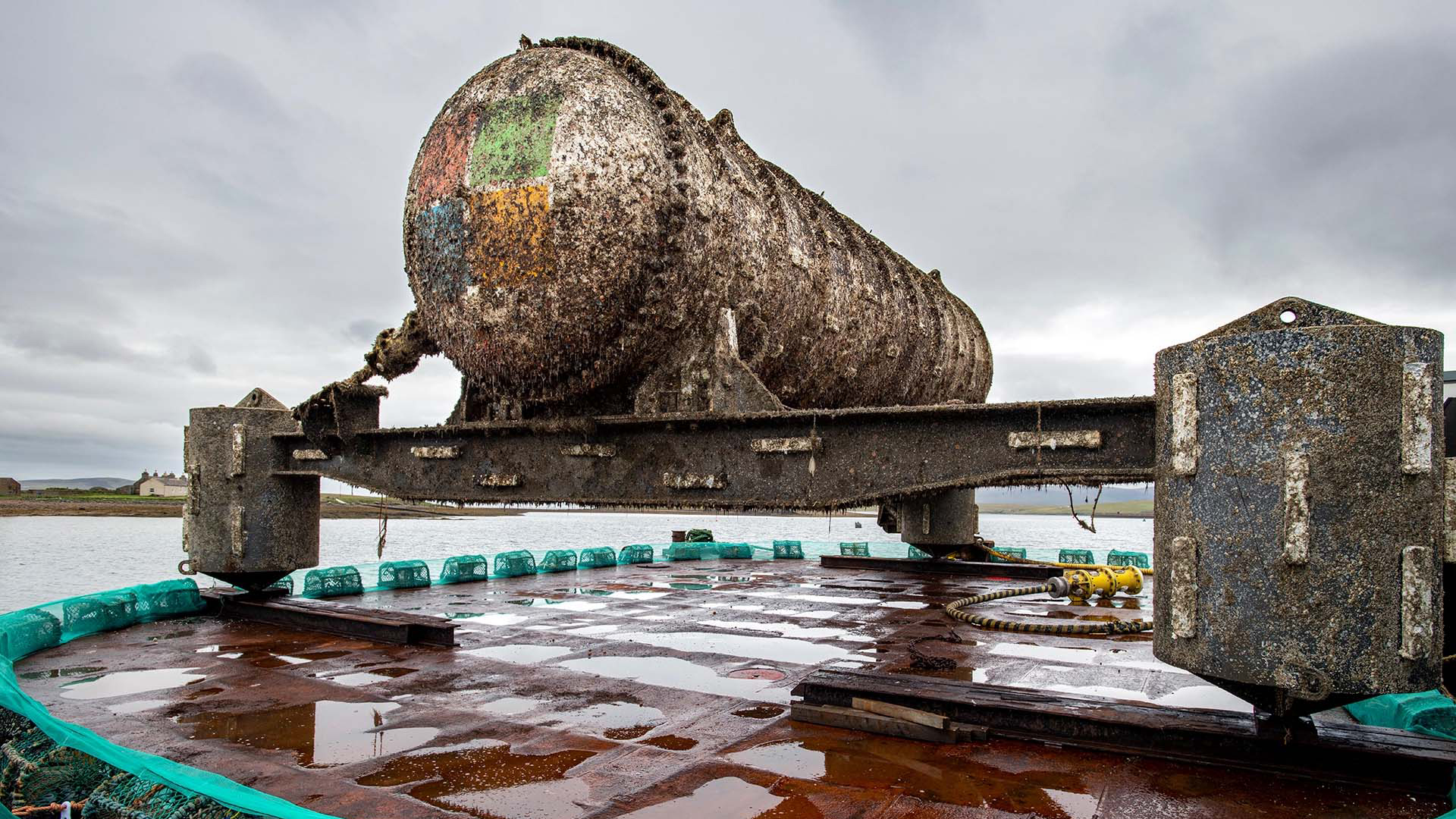Microsoft scrapped its 'Project Natick' underwater data center trial — here's why it was never going to work
Project Natick was largely a success, but didn’t make sense from an operational or practical perspective


Microsoft recently canned Project Natick, its pioneering underwater data center project, after just over a decade – and experts have told ITPro the project was never a truly feasible option for businesses.
The firm began the project back in 2013 and saw some fairly successful results after sinking the first servers in 2018. With 855 servers submerged and left unattended for just over two years, Microsoft found the success rate higher than the 135 unsubmerged servers they used for comparison.
Only six of the submerged servers failed compared to eight of those on dry land, suggesting potential in the project. Underwater data centers are particularly attractive from a sustainability standpoint owing to the ease with which liquid cooling can be performed.
As Cadence Design Systems engineer Mark Seymour told ITPro, however, there are limiting factors that make the underwater data center less appealing despite its cooling potential.
“It's obviously a potential solution to use liquid cooling by going into the biggest volume of liquid we have available,” Seymour said. “But whilst it's very attractive from the cooling point of view, obviously it’s less attractive from the operational point of view.”
Seymour added that underwater technology presents a problem for firms as they are not able to update it or upgrade it as easily as they could on land.
“It's just probably not the easiest way to be flexible in a very fast-changing world,” he added.
Sign up today and you will receive a free copy of our Future Focus 2025 report - the leading guidance on AI, cybersecurity and other IT challenges as per 700+ senior executives
Servicing data centers in these environments would present a similar challenge, with workers required to travel underwater to perform system alterations or fixes.
Seymour added that, even now, there are complaints about servicing servers in tanks, so “you can imagine” the sort of issues people might have should the servers be below sea level.
According to Microsoft, no more underwater data centers are being built, though the firm acknowledged its important learnings from the project.
"My team worked on it, and it worked. We learned a lot about operations below sea level and vibration and impacts on the server. So we'll apply those learnings to other cases," Noelle Walsh, head of Cloud Operations and Innovation at Microsoft, told Data Center Dynamics.
Others have attempted to undertake similar projects such as in China, where 100 units have been submerged off the coast of Sanya, a coastal city in the country's south.
Enterprises can take different approaches to data center cooling
Though server submersion may be an impractical approach to large-scale liquid cooling, there are other options for data center operators looking to cool their systems.
“There's plenty of ways of putting the heat in closer contact with liquid than via the intermediate of air, that's really what we're talking about,” Seymour said.
One such method is direct-to-chip, which Seymour described as “probably the most ready for market and most widely used”. This is where liquid is piped into a “cold plate” on the chip that helps remove heat from servers.
RELATED WHITEPAPER

The alternative to this method is to completely submerge the equipment in liquid, technically a more effective way of removing heat, though one that relies on a large amount of liquid use and compatibility of the equipment with the liquid itself.
For enterprise use, there are different advantages to consider. direct-to-chip, for example, is “probably most straightforward” for those looking to reuse an existing data center with a mind to improve cooling systems.

George Fitzmaurice is a former Staff Writer at ITPro and ChannelPro, with a particular interest in AI regulation, data legislation, and market development. After graduating from the University of Oxford with a degree in English Language and Literature, he undertook an internship at the New Statesman before starting at ITPro. Outside of the office, George is both an aspiring musician and an avid reader.
-
 Can the ‘microshifting’ trend work in the tech sector?
Can the ‘microshifting’ trend work in the tech sector?In-depth Research shows that employees want to break up their working days into short, flexible blocks – here’s how tech leaders can implement what’s being coined as ‘microshifting’
-
 Driving sustainable AI success for partners with the AI flywheel
Driving sustainable AI success for partners with the AI flywheelIndustry Insights Igniting sustainable AI success and measurable ROI for partners with the AI flywheel
-
 The Microsoft Azure outage explained: What happened, who was impacted, and what can we learn from it?
The Microsoft Azure outage explained: What happened, who was impacted, and what can we learn from it?News Microsoft has confirmed its Azure services are back online after a major outage impacted services across multiple regions – here's everything you need to know.
-
 Google just confirmed the location of its first small modular reactor
Google just confirmed the location of its first small modular reactorNews Developed by Kairos, Google's first small modular reactor will be located in Tennessee, with operations beginning in 2030.
-
 Microsoft's plan to use human waste to offset AI emissions stinks of greenwashing
Microsoft's plan to use human waste to offset AI emissions stinks of greenwashingOpinion Hyperscalers are getting increasingly gimmicky when it comes to sustainability
-
 Microsoft invests $400 million to expand Swiss data centers
Microsoft invests $400 million to expand Swiss data centersNews Growing AI and cloud demand, plus data sovereignty requirements, are fueling European data center investment
-
 Microsoft says this data center cooling technique can cut emissions by one-fifth – but switching to renewables will prove far more impactful
Microsoft says this data center cooling technique can cut emissions by one-fifth – but switching to renewables will prove far more impactfulNews In a cradle-to-grave environmental assessment, Microsoft has examined manufacturing, transportation, deployment, and end-of-life disposal
-
 First Microsoft, now AWS: Why tech giants are hitting the brakes on costly data center plans
First Microsoft, now AWS: Why tech giants are hitting the brakes on costly data center plansNews Amazon Web Services (AWS) has paused plans for some data center leases, according to analysts, sparking further concerns about the cost of AI infrastructure spending plans.
-
 OpenAI inks $12bn CoreWeave deal in latest move away from Microsoft
OpenAI inks $12bn CoreWeave deal in latest move away from MicrosoftNews Cloud infrastructure company CoreWeave will supply OpenAI with infrastructure to run the firm's latest models in a deal worth nearly $12 billion.
-
 Analysts think Microsoft's data center rollback is bad news for the AI boom – but the company says not to worry
Analysts think Microsoft's data center rollback is bad news for the AI boom – but the company says not to worryNews Microsoft has reportedly ended leases for a significant amount of data center capacity, sparking debate over whether the AI boom is starting to falter.